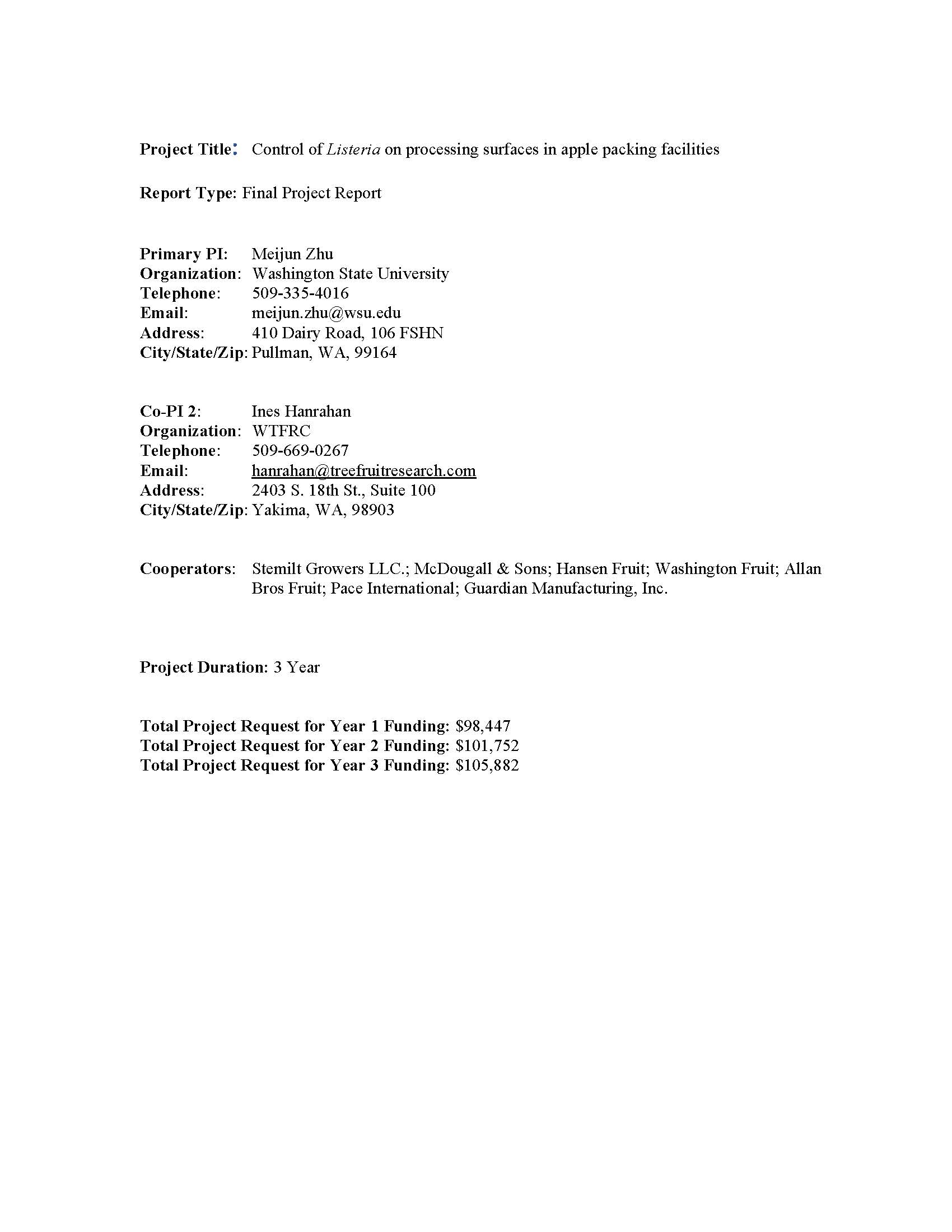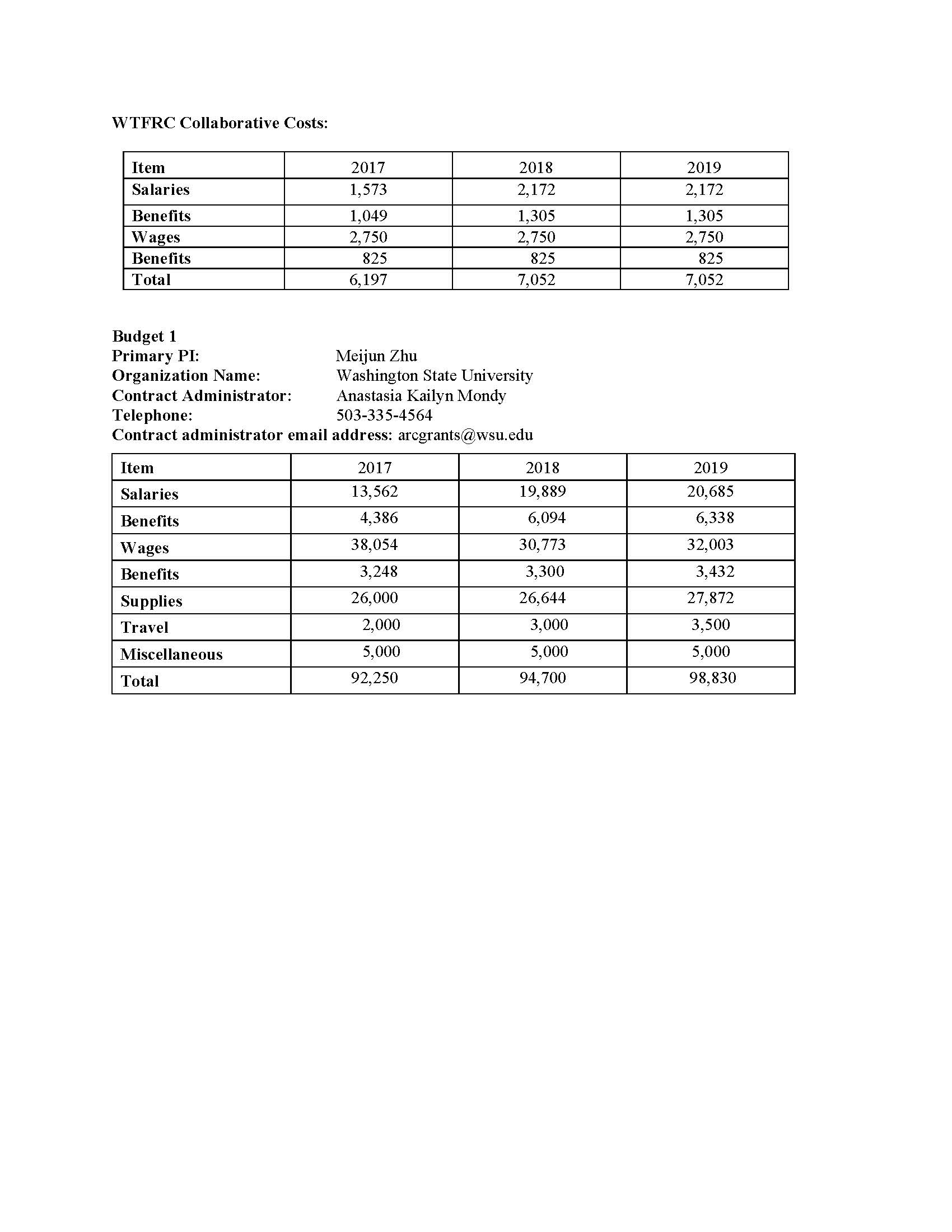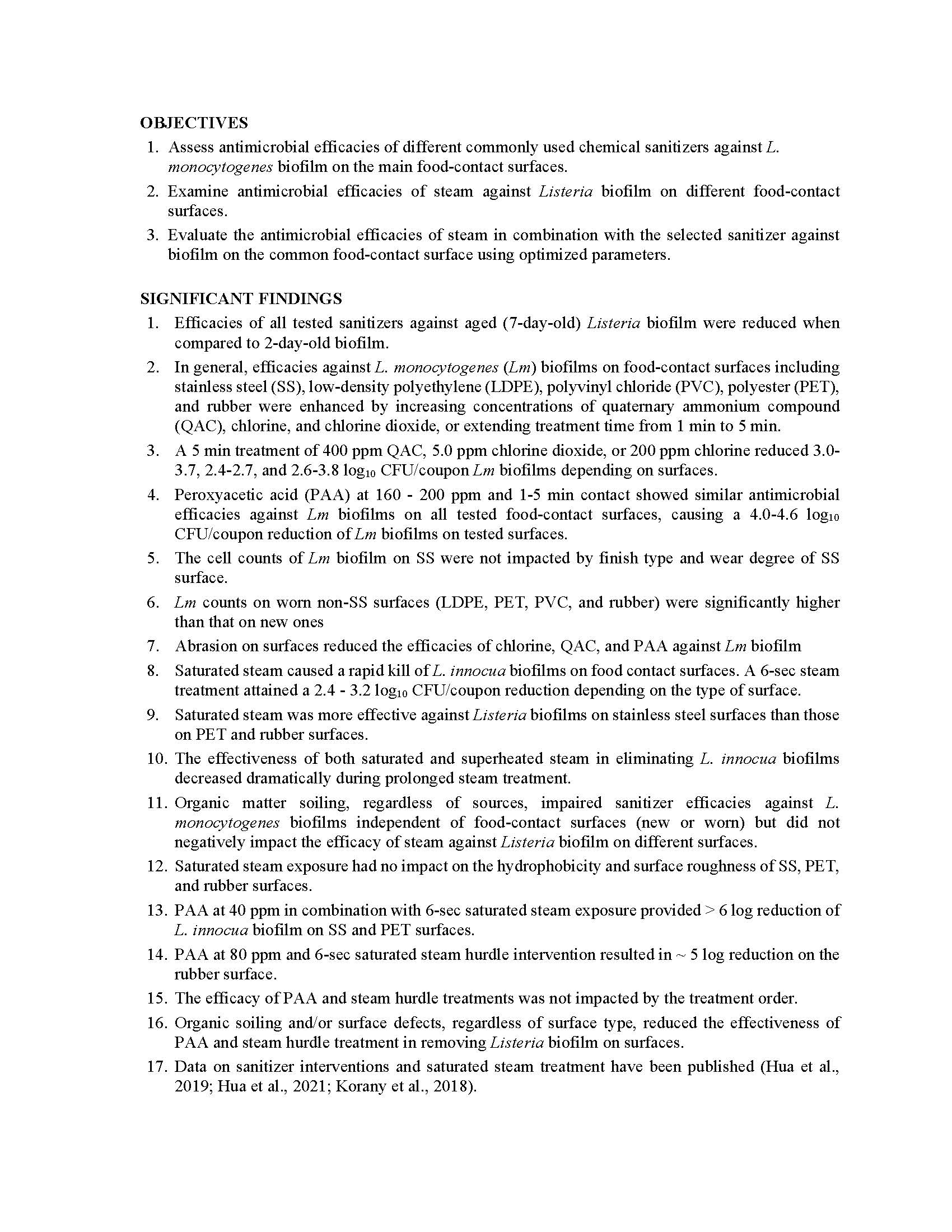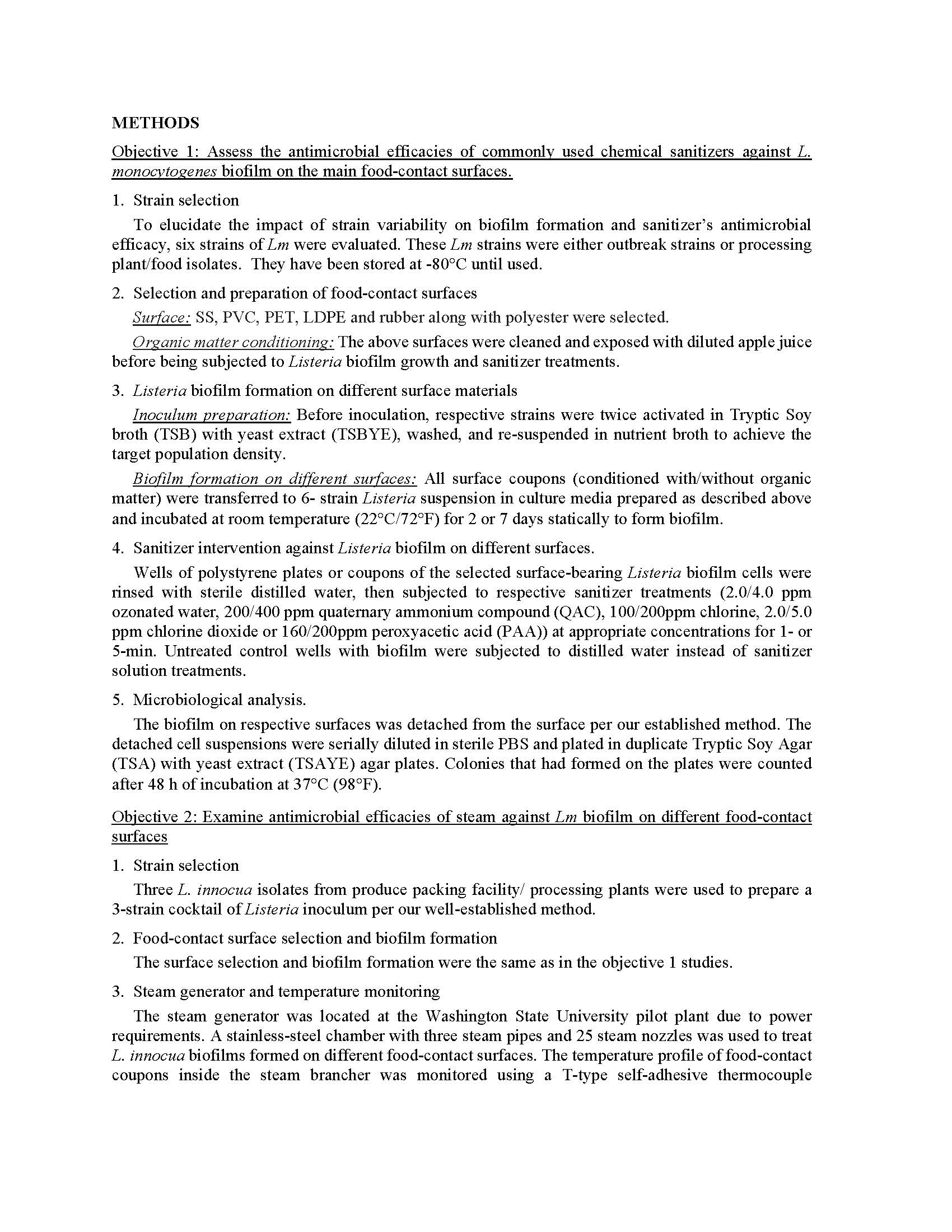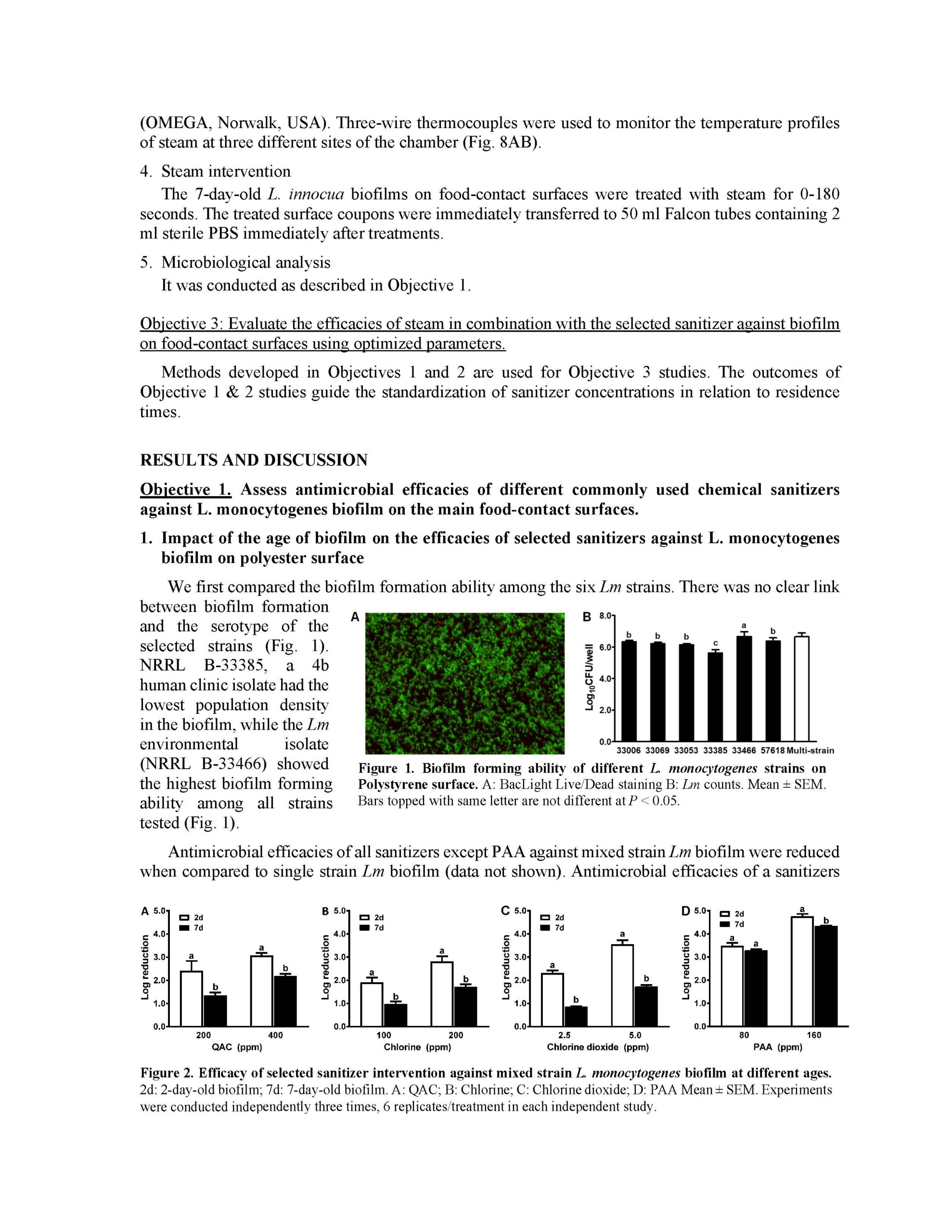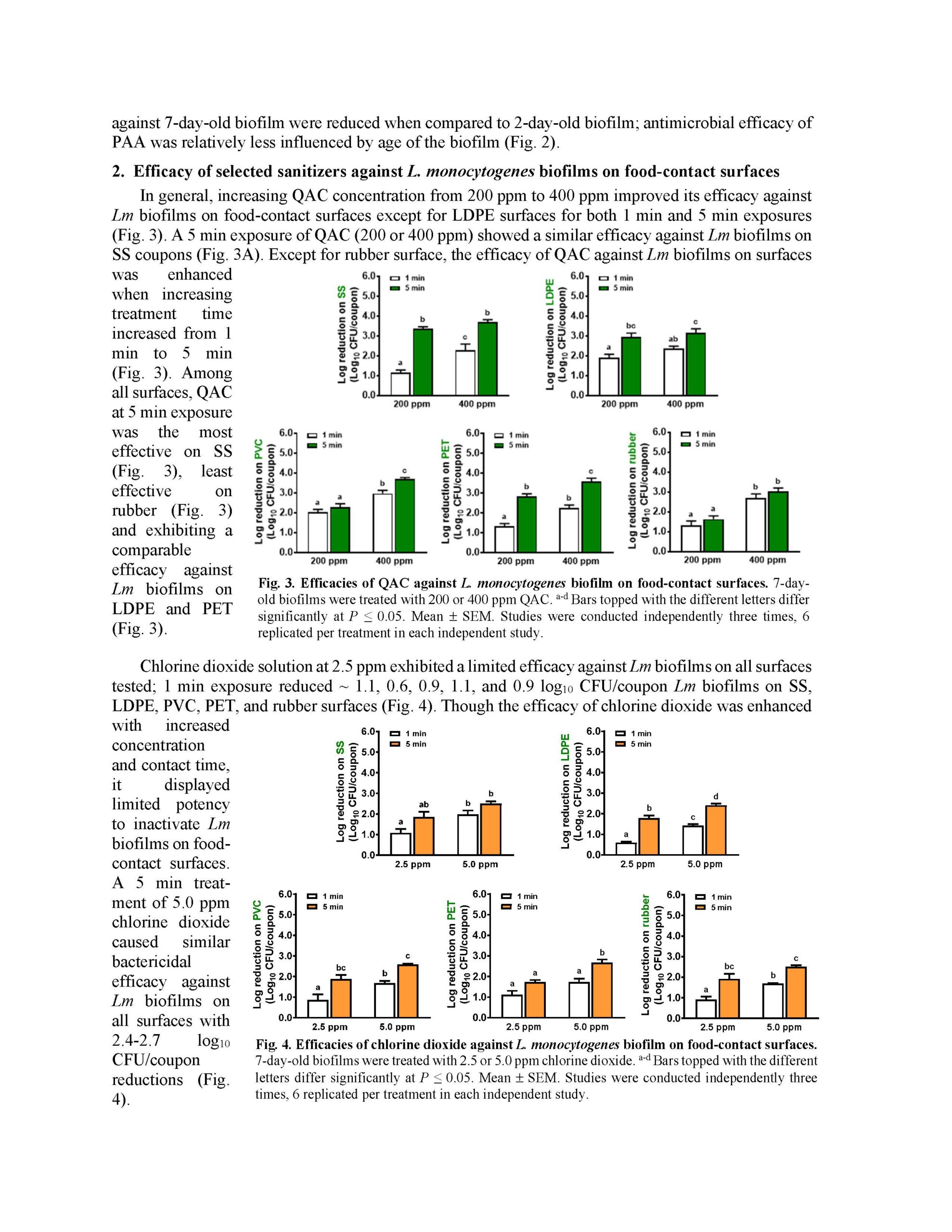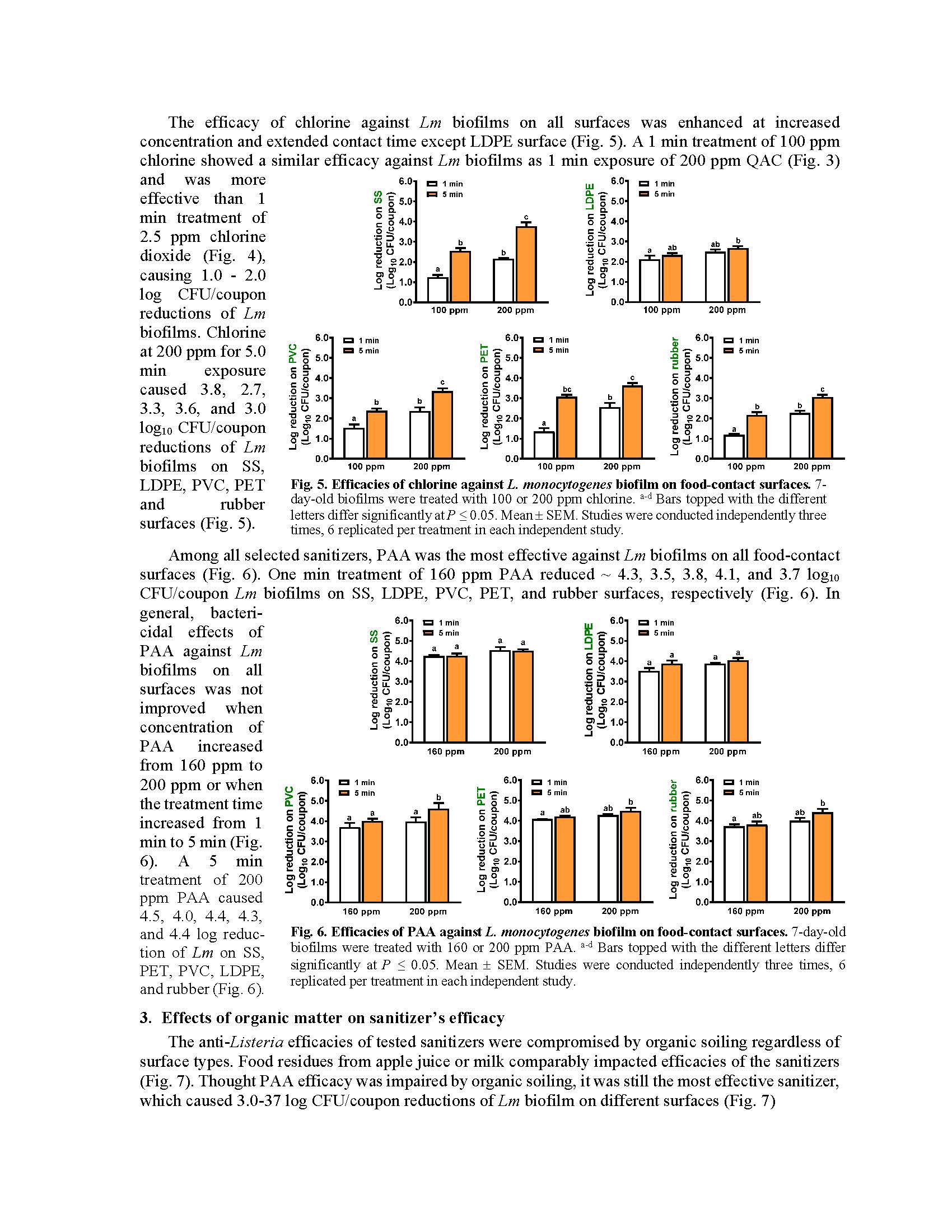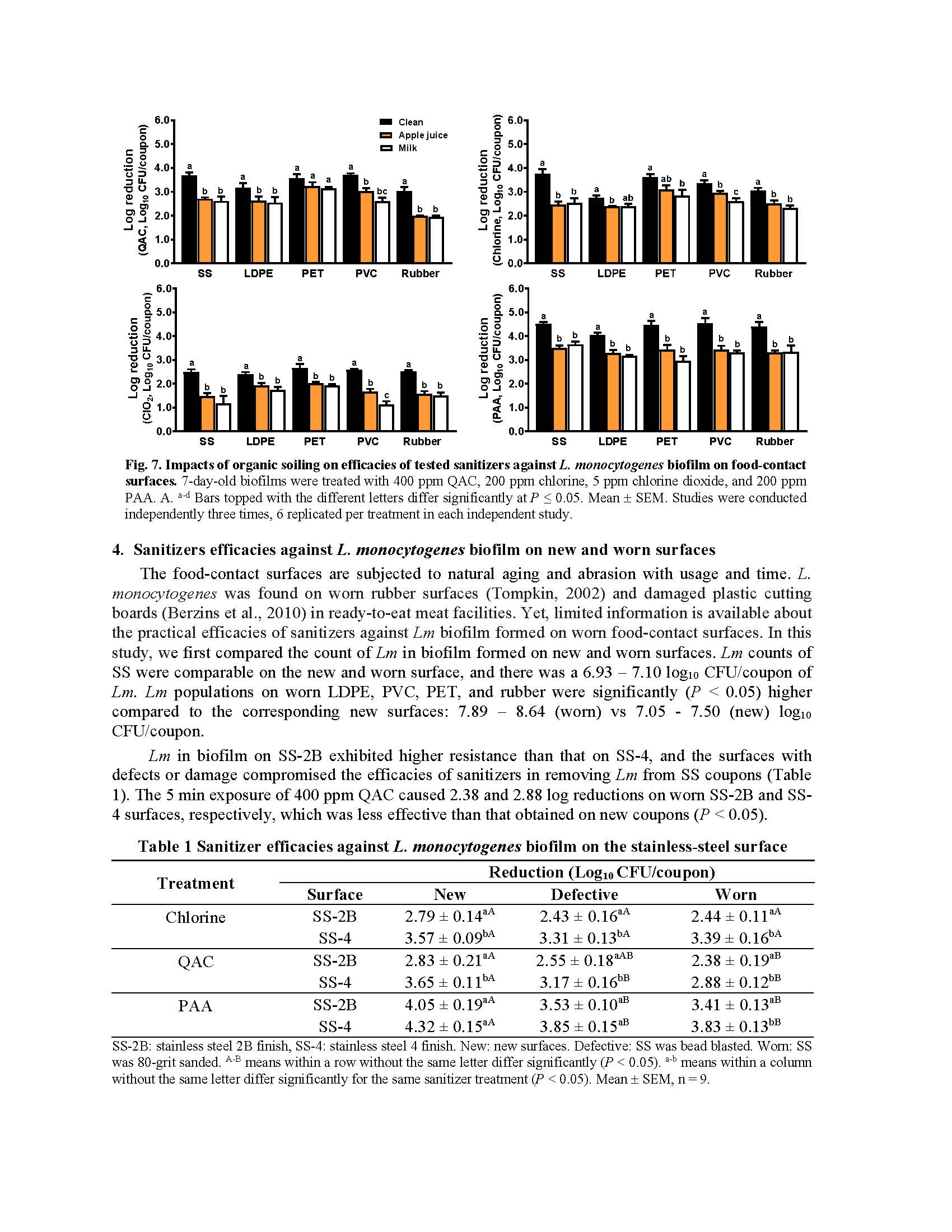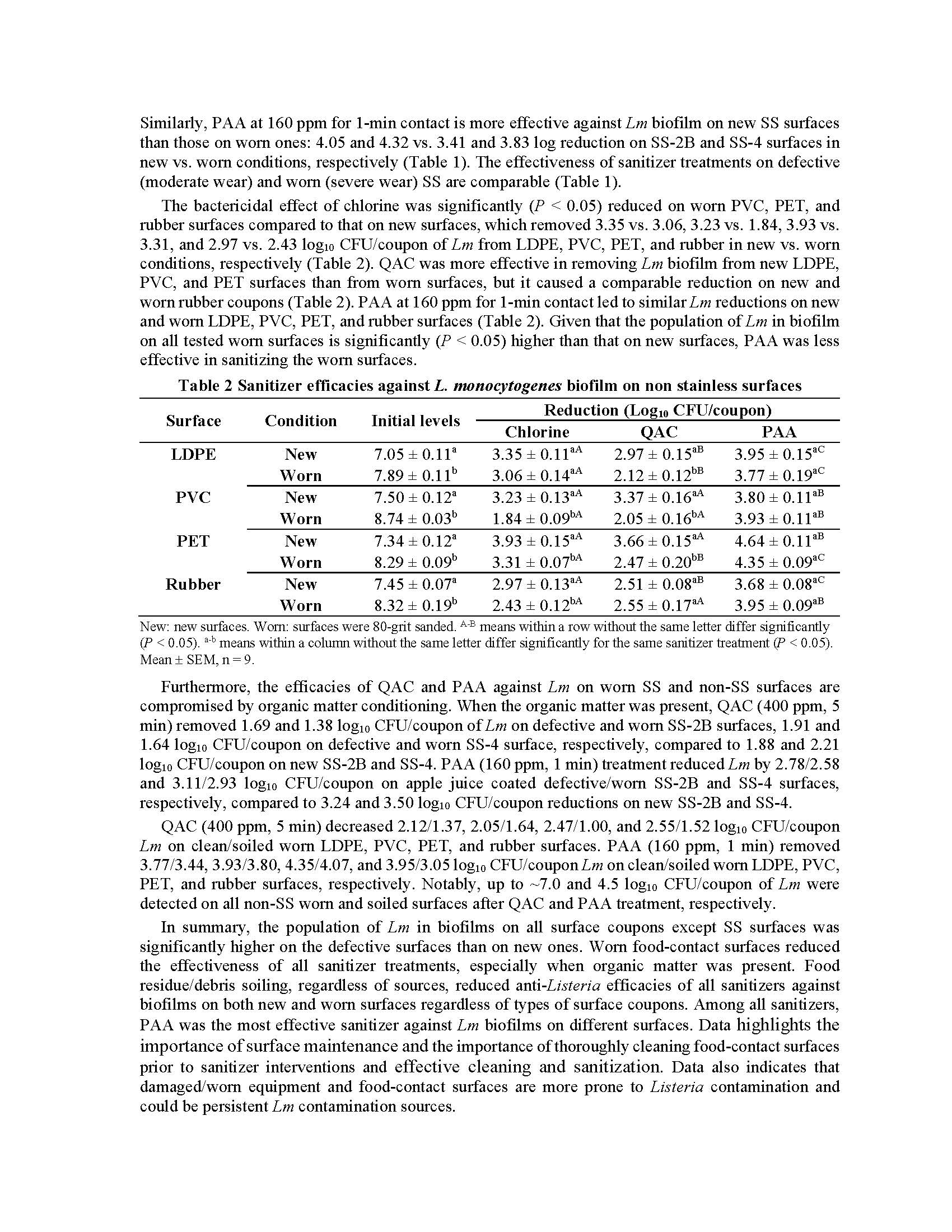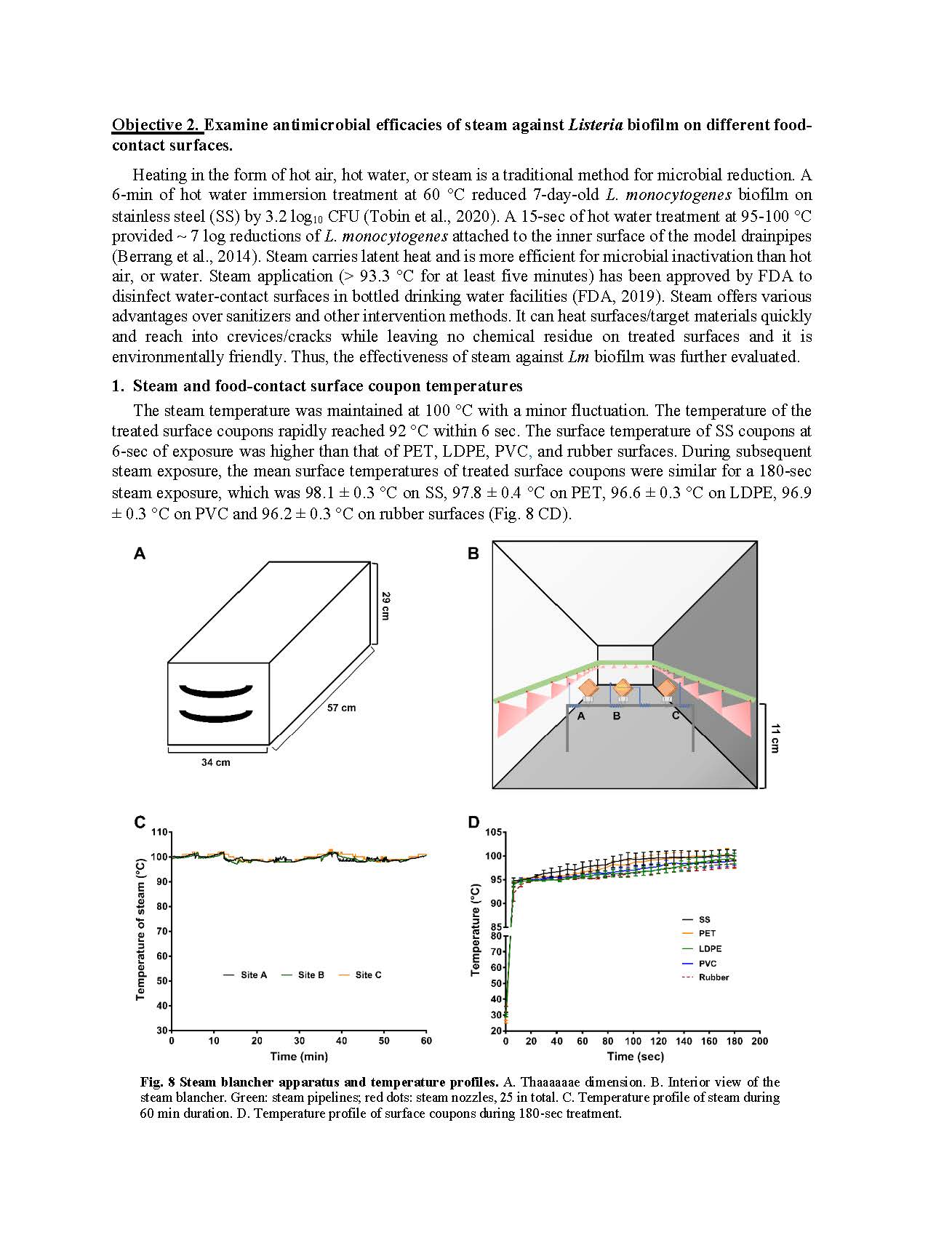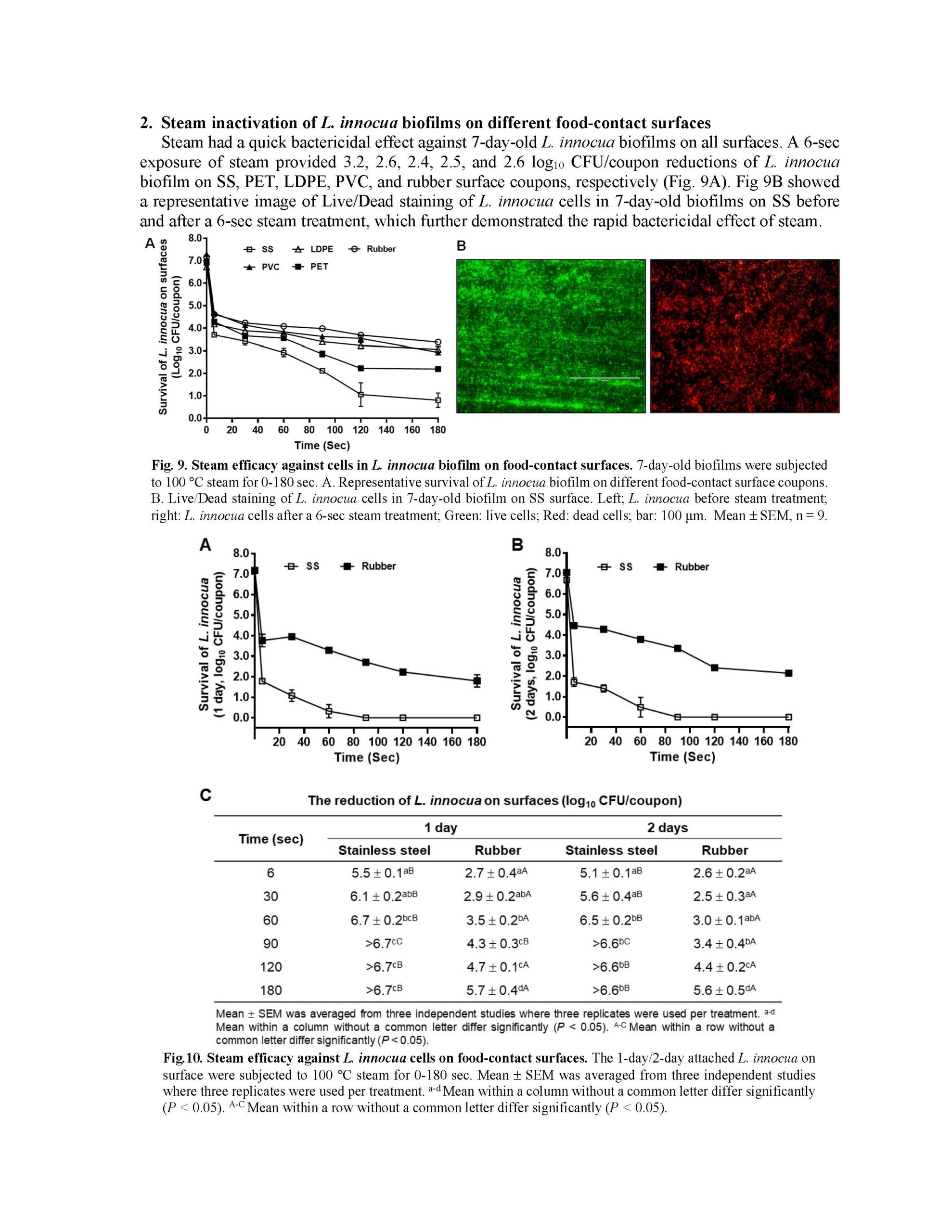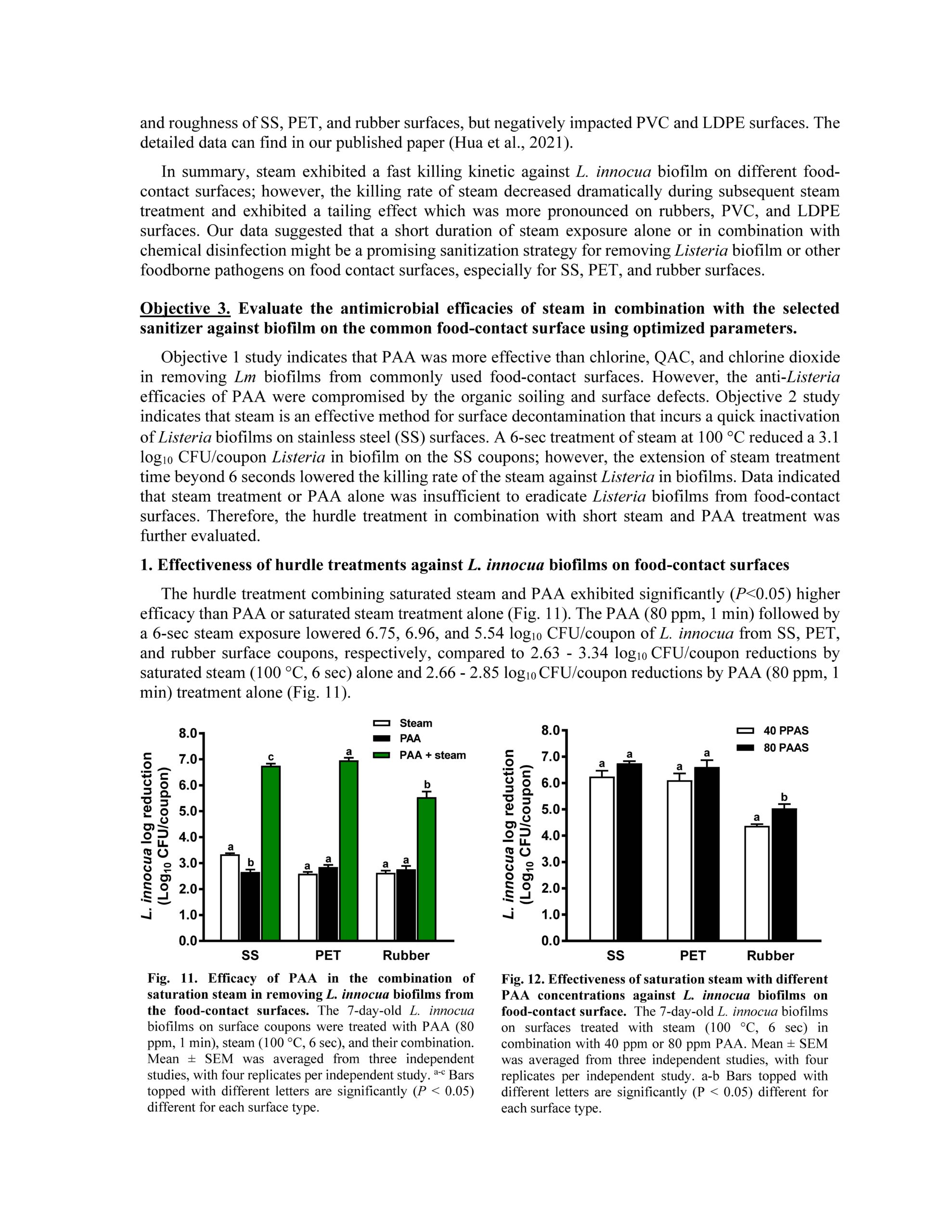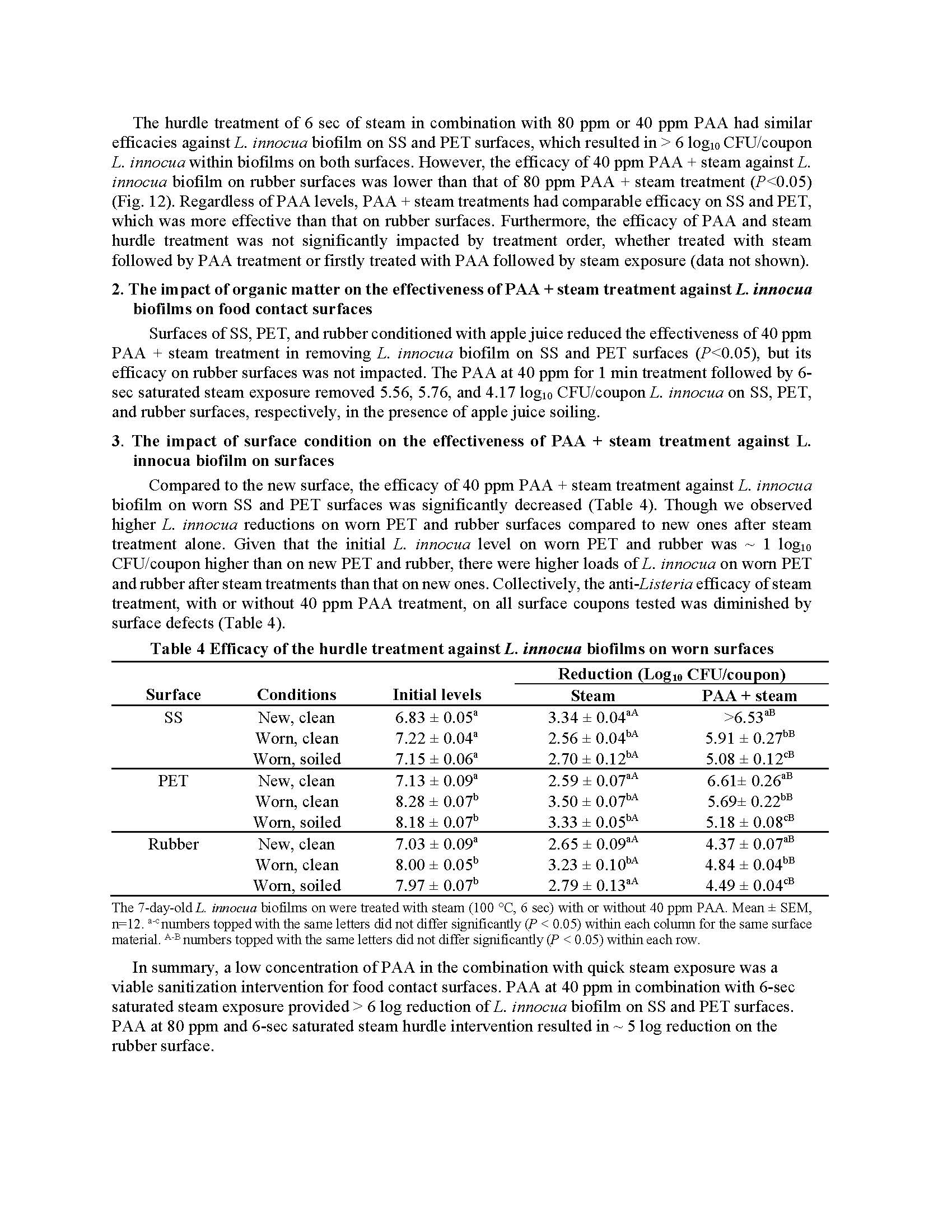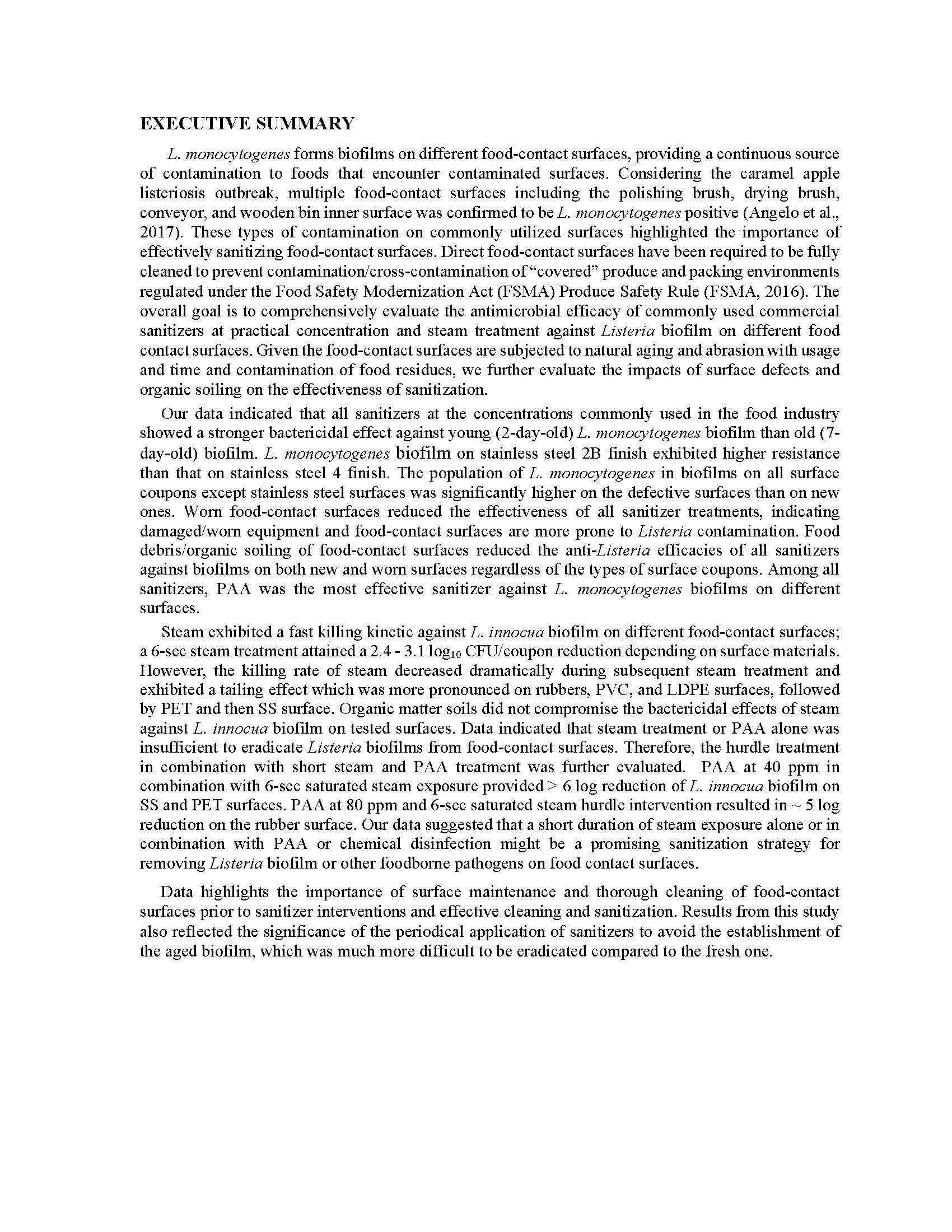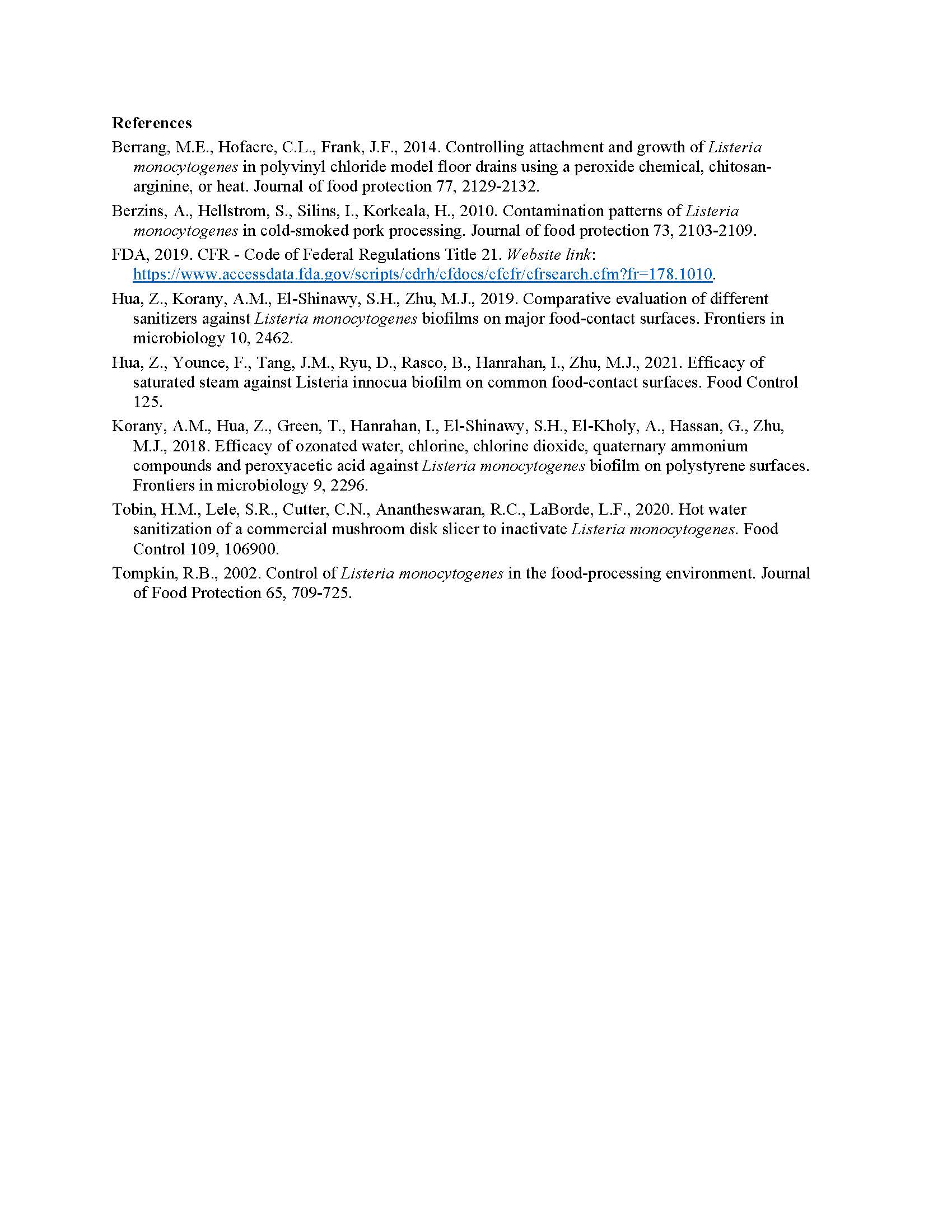Control of Listeria on processing surfaces in apple packing facilities
Author: Meijun Zhu
Published: 2023
Summary: L. monocytogenes forms biofilms on different food-contact surfaces, providing a continuous source of contamination to foods that encounter contaminated surfaces. Considering the caramel apple listeriosis outbreak, multiple food-contact surfaces including the polishing brush, drying brush, conveyor, and wooden bin inner surface was confirmed to be L. monocytogenes positive (Angelo et al., 2017). These types of contamination on commonly utilized surfaces highlighted the importance of effectively sanitizing food-contact surfaces. Direct food-contact surfaces have been required to be fully cleaned to prevent contamination/cross-contamination of “covered” produce and packing environments regulated under the Food Safety Modernization Act (FSMA) Produce Safety Rule (FSMA, 2016). The overall goal is to comprehensively evaluate the antimicrobial efficacy of commonly used commercial sanitizers at practical concentration and steam treatment against Listeria biofilm on different food contact surfaces. Given the food-contact surfaces are subjected to natural aging and abrasion with usage and time and contamination of food residues, we further evaluate the impacts of surface defects and organic soiling on the effectiveness of sanitization. Our data indicated that all sanitizers at the concentrations commonly used in the food industry showed a stronger bactericidal effect against young (2-day-old) L. monocytogenes biofilm than old (7- day-old) biofilm. L. monocytogenes biofilm on stainless steel 2B finish exhibited higher resistance than that on stainless steel 4 finish. The population of L. monocytogenes in biofilms on all surface coupons except stainless steel surfaces was significantly higher on the defective surfaces than on new ones. Worn food-contact surfaces reduced the effectiveness of all sanitizer treatments, indicating damaged/worn equipment and food-contact surfaces are more prone to Listeria contamination. Food debris/organic soiling of food-contact surfaces reduced the anti-Listeria efficacies of all sanitizers against biofilms on both new and worn surfaces regardless of the types of surface coupons. Among all sanitizers, PAA was the most effective sanitizer against L. monocytogenes biofilms on different surfaces. Steam exhibited a fast killing kinetic against L. innocua biofilm on different food-contact surfaces; a 6-sec steam treatment attained a 2.4 - 3.1 log10 CFU/coupon reduction depending on surface materials. However, the killing rate of steam decreased dramatically during subsequent steam treatment and exhibited a tailing effect which was more pronounced on rubbers, PVC, and LDPE surfaces, followed by PET and then SS surface. Organic matter soils did not compromise the bactericidal effects of steam against L. innocua biofilm on tested surfaces. Data indicated that steam treatment or PAA alone was insufficient to eradicate Listeria biofilms from food-contact surfaces. Therefore, the hurdle treatment in combination with short steam and PAA treatment was further evaluated. PAA at 40 ppm in combination with 6-sec saturated steam exposure provided > 6 log reduction of L. innocua biofilm on SS and PET surfaces. PAA at 80 ppm and 6-sec saturated steam hurdle intervention resulted in ~ 5 log reduction on the rubber surface. Our data suggested that a short duration of steam exposure alone or in combination with PAA or chemical disinfection might be a promising sanitization strategy for removing Listeria biofilm or other foodborne pathogens on food contact surfaces. Data highlights the importance of surface maintenance and thorough cleaning of food-contact surfaces prior to sanitizer interventions and effective cleaning and sanitization. Results from this study also reflected the significance of the periodical application of sanitizers to avoid the establishment of the aged biofilm, which was much more difficult to be eradicated compared to the fresh one.
Keywords:

